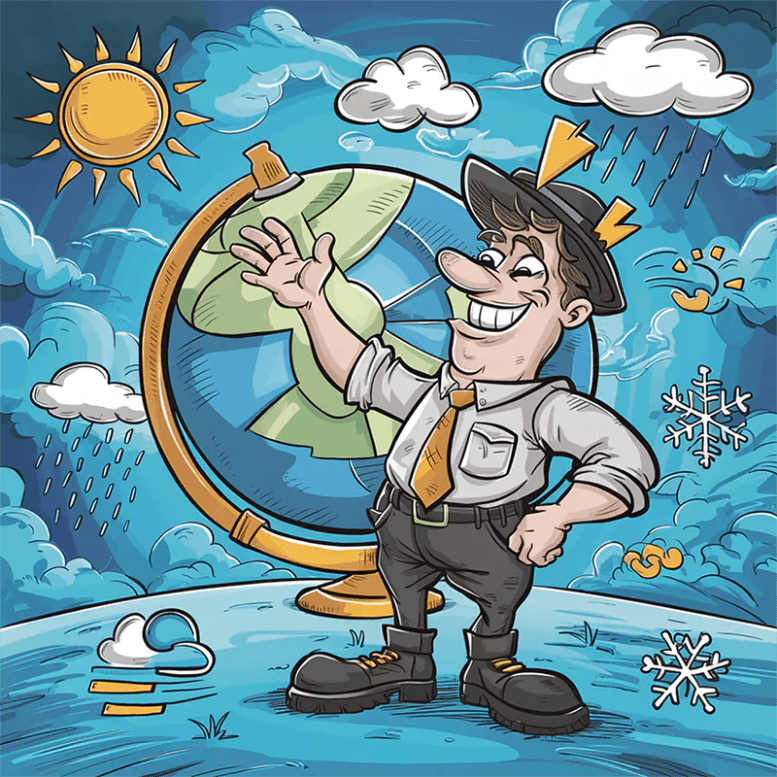Wind Chill Index Calculator - wind tools
About Wind Chill Index Calculator wind tools
Calculates the wind chill temperature, which represents how cold the air feels on exposed skin due to the combined effects of air temperature and wind speed.
Formula:
Wind Chill (°C) = 13.12 + 0.6215T - 11.37V^0.16 + 0.3965TV^0.16 (Where T is temperature in °C and V is wind speed in km/h)
Tips:
The Wind Chill Index is only calculated for temperatures at or below 10°C and wind speeds above 4.8 km/h.
Wind chill can make it feel significantly colder than the actual air temperature, increasing the risk of hypothermia and frostbite.
Dress warmly in layers and cover exposed skin when venturing out in cold and windy conditions.
Fun Fact:
The Wind Chill Index was developed in the 1940s based on experiments conducted in Antarctica.
Related Article
Beyond the Breeze: Understanding Wind, Its Measurement, and Its Impact on Our World
From the gentle rustle of leaves to the destructive force of hurricanes, wind, the movement of air, is a ubiquitous presence in our atmosphere. It shapes weather patterns, influences climate, generates renewable energy, and plays a crucial role in various aspects of our lives.
This guide will explore the science of wind, its measurement, and its diverse impacts on our world, from influencing weather forecasts to powering wind turbines to shaping coastal landscapes.
1. What Causes Wind?
Wind is caused by differences in atmospheric pressure. Air flows from areas of high pressure to areas of low pressure, creating wind. The greater the pressure difference, the stronger the wind.
- Pressure Gradients: The difference in atmospheric pressure between two locations is called a pressure gradient. Wind speed is generally proportional to the pressure gradient.
- Uneven Heating: The Earth's surface is heated unevenly by the sun, creating temperature differences that lead to pressure variations and wind.
- Coriolis Effect: The Earth's rotation causes a deflection of moving objects, including air currents. This effect, known as the Coriolis effect, causes winds to curve to the right in the Northern Hemisphere and to the left in the Southern Hemisphere.
2. Measuring Wind Speed and Direction
- Anemometer: An instrument used to measure wind speed. Most anemometers have rotating cups or propellers that spin faster as wind speed increases.
- Wind Vane: An instrument used to indicate wind direction. A wind vane points in the direction from which the wind is blowing.
- Units of Measurement: Wind speed is measured in various units, including:
- Miles per Hour (mph): Commonly used in the United States.
- Kilometers per Hour (km/h): The standard unit used internationally.
- Knots (kt): Often used in marine and aviation contexts. One knot is equal to one nautical mile per hour.
- Meters per Second (m/s): The SI unit of speed.
3. The Beaufort Wind Scale: A Descriptive Gauge
The Beaufort Wind Scale is a descriptive scale that relates wind speed to observed conditions at sea or on land. It was devised by Sir Francis Beaufort in 1805.
- Force 0 (Calm): Wind speed less than 1 knot. Sea is like a mirror. Smoke rises vertically.
- Force 5 (Fresh Breeze): Wind speed 17-21 knots. Small waves, becoming longer. Some spray.
- Force 10 (Storm): Wind speed 48-55 knots. Very high waves with long overhanging crests. Sea surface is white with foam and spray.
- Force 12 (Hurricane Force): Wind speed 64 knots or greater. Exceptionally high waves. Air filled with foam and spray. Sea completely white with driving spray. Visibility greatly reduced.
4. Wind's Influence on Weather:
- Wind and Temperature: Wind can transport heat, moderating temperatures.
- Wind and Precipitation: Wind affects the distribution and intensity of precipitation.
- Wind and Clouds: Wind can shape and move clouds, influencing cloud cover and precipitation patterns.
- Wind and Severe Weather: Wind shear is a critical factor in the development of severe thunderstorms and tornadoes.
5. Wind's Impact on Climate:
- Global Wind Patterns: Large-scale wind patterns, such as the trade winds and jet streams, influence global climate by distributing heat and moisture.
- Ocean Currents: Wind drives ocean currents, which play a significant role in regulating global temperatures and transporting nutrients.
6. Harnessing Wind Power:
Wind is a renewable energy source that can be harnessed to generate electricity.
- Wind Turbines: Wind turbines convert the kinetic energy of wind into mechanical energy, which is then used to generate electricity.
- Wind Farms: Collections of wind turbines located in areas with strong and consistent winds.
- Benefits of Wind Energy: Clean, renewable, and sustainable energy source, reducing reliance on fossil fuels and mitigating climate change.
7. Wind's Influence on the Environment:
- Wind Erosion: Wind can erode soil and transport dust, contributing to desertification.
- Wind Dispersal: Wind aids in the dispersal of seeds, pollen, and other biological materials.
- Coastal Processes: Wind generates waves, which shape coastal landscapes through erosion and deposition.
Wind: A Force to Be Reckoned With
From shaping our weather to influencing global climate to providing renewable energy, wind is a powerful force in our world. By understanding its causes, its measurement, and its multifaceted impacts, we can gain a deeper appreciation for this dynamic element that shapes our environment and our lives.
Some related Fun Facts...
Wind Fun Facts:
- The highest wind speed ever recorded on Earth was 253 knots (408 km/h or 253 mph) during the passage of Tropical Cyclone Olivia in 1996.
- The fastest wind speed ever recorded on a planet in our solar system is on Neptune, reaching speeds of over 1,200 mph (2,000 km/h).
- The jet stream, a fast-flowing air current in the upper atmosphere, can reach speeds of over 200 mph (320 km/h).
- The trade winds, consistent winds blowing towards the equator, helped early explorers navigate the oceans.
- Wind can create giant sand dunes in deserts, some of which can reach heights of over 1,000 feet (300 meters).
- Wind power is one of the fastest-growing sources of renewable energy worldwide.
- The Beaufort Wind Scale was originally developed for sailing ships, with each Force corresponding to the amount of sail that could be safely carried.
- Wind can create beautiful and intricate patterns in clouds.
- Wind plays a crucial role in dispersing seeds and pollen, helping plants reproduce.
- Understanding wind patterns is essential for weather forecasting, aviation, sailing, and many other activities.
Frequently Asked Questions
Wind FAQ:
1. What causes wind? Differences in atmospheric pressure. Air flows from areas of high pressure to areas of low pressure.
2. How is wind speed measured? Using an anemometer, a device with rotating cups or propellers that spin faster as wind speed increases.
3. What are common units for measuring wind speed? Miles per hour (mph), kilometers per hour (km/h), knots (kt), and meters per second (m/s).
4. What is the Beaufort Wind Scale? A descriptive scale that relates wind speed to observed conditions at sea or on land, ranging from Force 0 (calm) to Force 12 (hurricane force).
5. How does wind affect weather? It influences temperature, precipitation patterns, cloud formation, and the development of severe weather.
6. What is wind shear? A sudden change in wind speed or direction, a hazard for aircraft, especially during takeoff and landing.
7. How is wind used to generate electricity? Wind turbines convert the kinetic energy of wind into mechanical energy, which is then used to generate electricity.
8. What are the benefits of wind energy? It's a clean, renewable, and sustainable source of energy that reduces reliance on fossil fuels.
9. How does wind affect the environment? It can cause soil erosion, transport dust, disperse seeds and pollen, and shape coastal landscapes.
10. Where can I find wind speed and direction information? Weather forecasts, weather apps, and websites often provide wind data.






